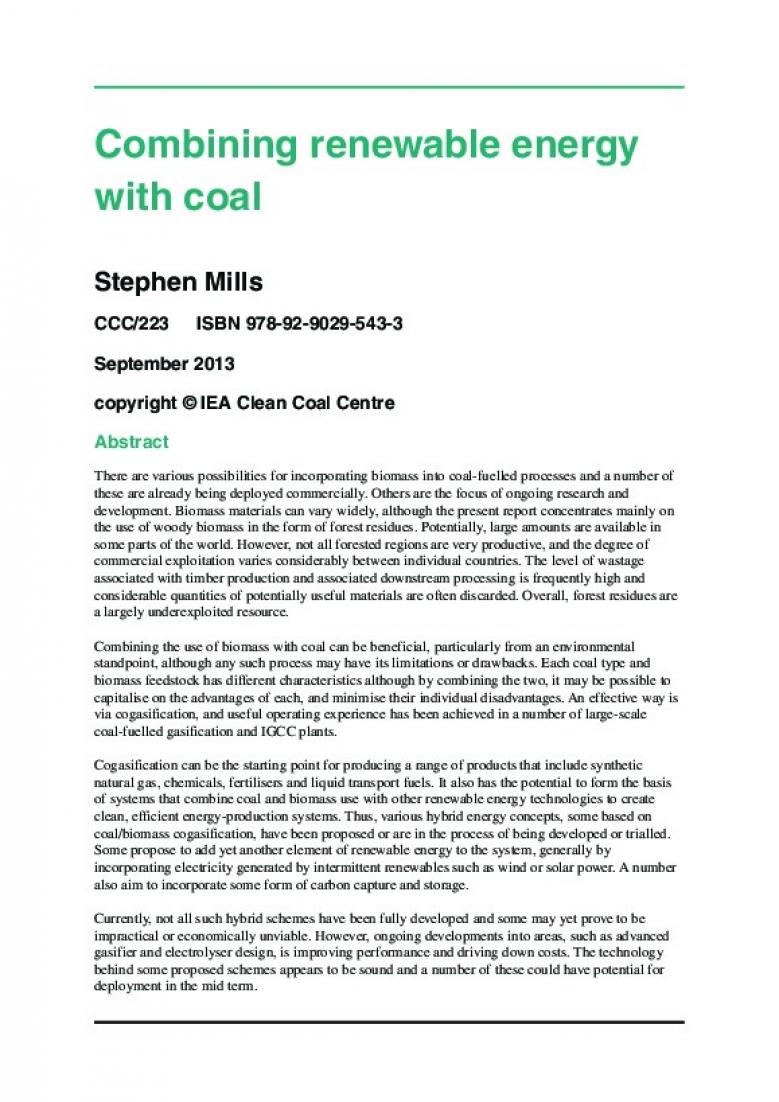CCC/223 ISBN 978-92-9029-543-3
September 2013
copyright © IEA Clean Coal Centre
Abstract
There are various possibilities for incorporating biomass into coal-fuelled processes and a number of
these are already being deployed commercially. Others are the focus of ongoing research and
development. Biomass materials can vary widely, although the present report concentrates mainly on
the use of woody biomass in the form of forest residues. Potentially, large amounts are available in
some parts of the world. However, not all forested regions are very productive, and the degree of
commercial exploitation varies considerably between individual countries. The level of wastage
associated with timber production and associated downstream processing is frequently high and
considerable quantities of potentially useful materials are often discarded. Overall, forest residues are
a largely underexploited resource.
Combining the use of biomass with coal can be beneficial, particularly from an environmental
standpoint, although any such process may have its limitations or drawbacks. Each coal type and
biomass feedstock has different characteristics although by combining the two, it may be possible to
capitalise on the advantages of each, and minimise their individual disadvantages. An effective way is
via cogasification, and useful operating experience has been achieved in a number of large-scale
coal-fuelled gasification and IGCC plants.
Cogasification can be the starting point for producing a range of products that include synthetic
natural gas, chemicals, fertilisers and liquid transport fuels. It also has the potential to form the basis
of systems that combine coal and biomass use with other renewable energy technologies to create
clean, efficient energy-production systems. Thus, various hybrid energy concepts, some based on
coal/biomass cogasification, have been proposed or are in the process of being developed or trialled.
Some propose to add yet another element of renewable energy to the system, generally by
incorporating electricity generated by intermittent renewables such as wind or solar power. A number
also aim to incorporate some form of carbon capture and storage.
Currently, not all such hybrid schemes have been fully developed and some may yet prove to be
impractical or economically unviable. However, ongoing developments into areas, such as advanced
gasifier and electrolyser design, is improving performance and driving down costs. The technology
behind some proposed schemes appears to be sound and a number of these could have potential for
deployment in the mid term.
| Attachment | Size |
|---|---|
| 1.36 MB |


